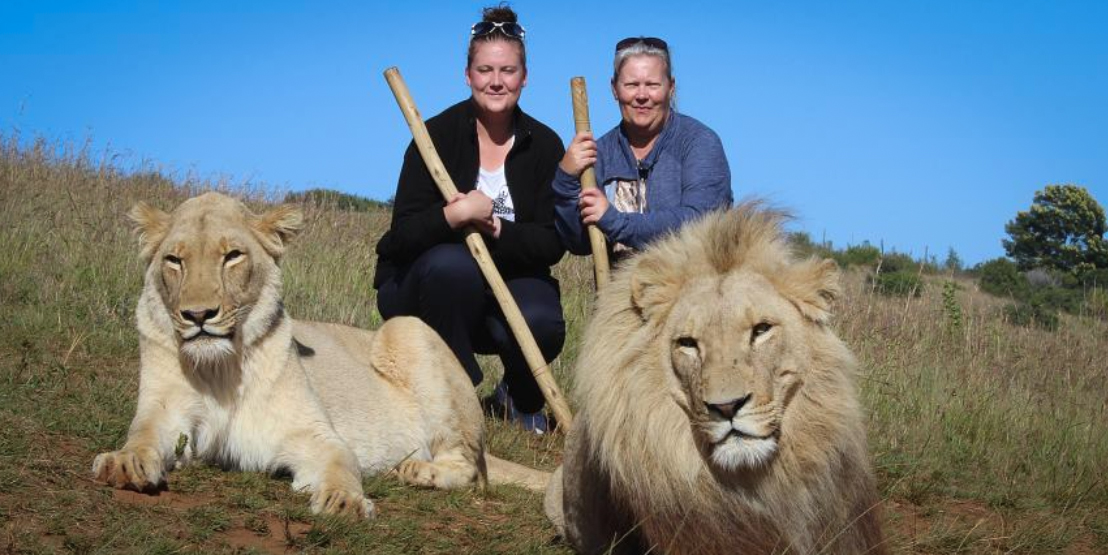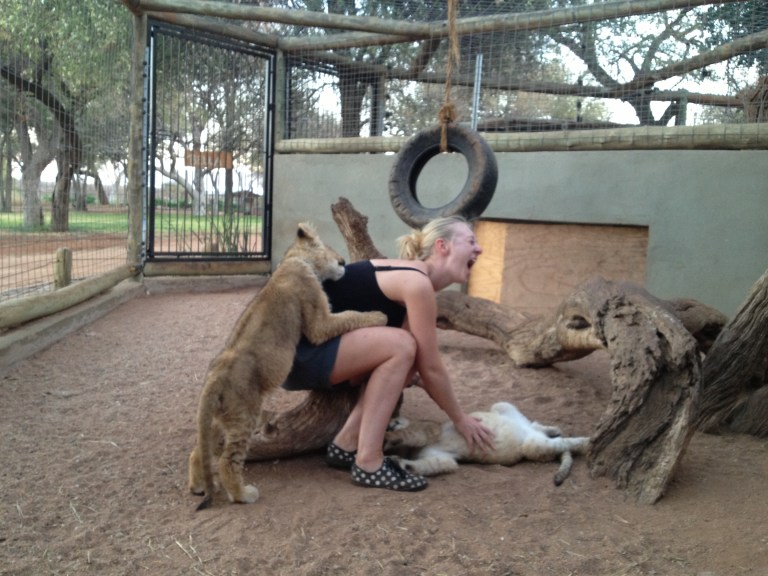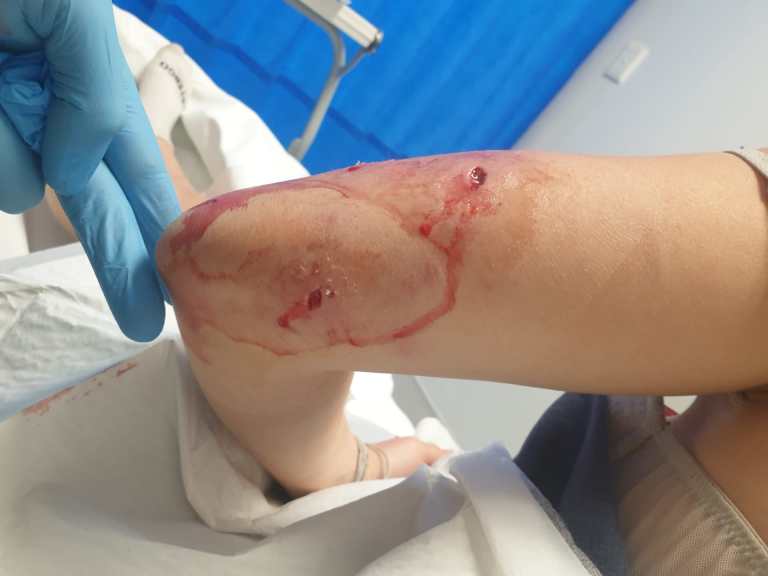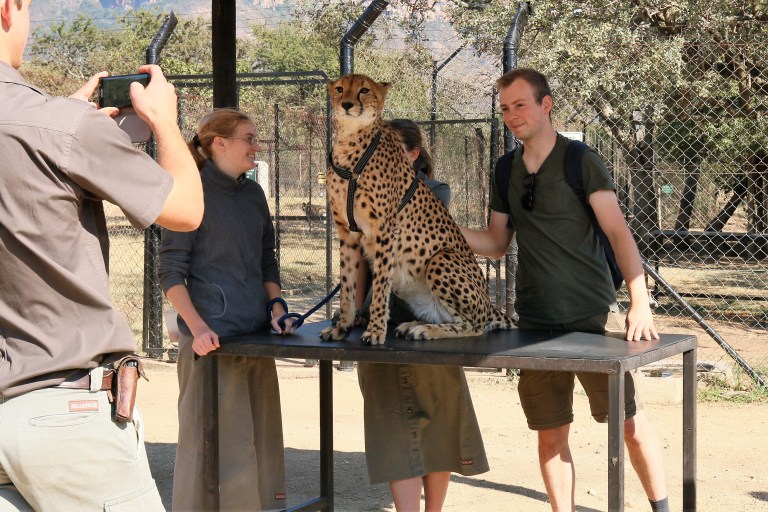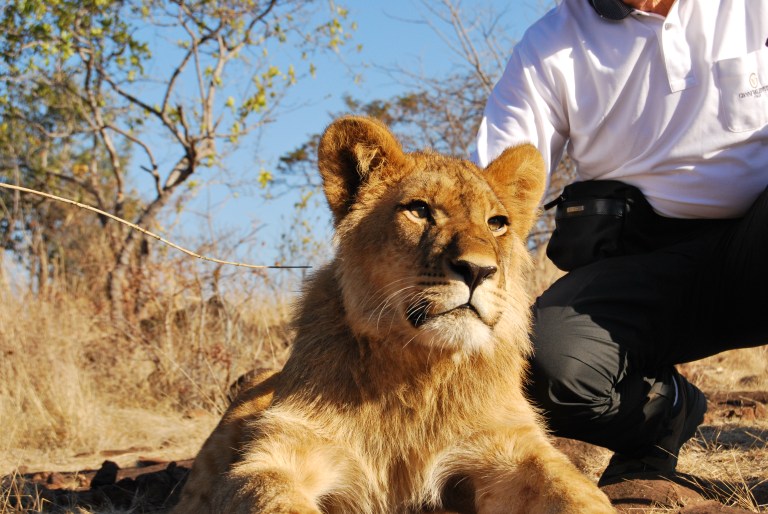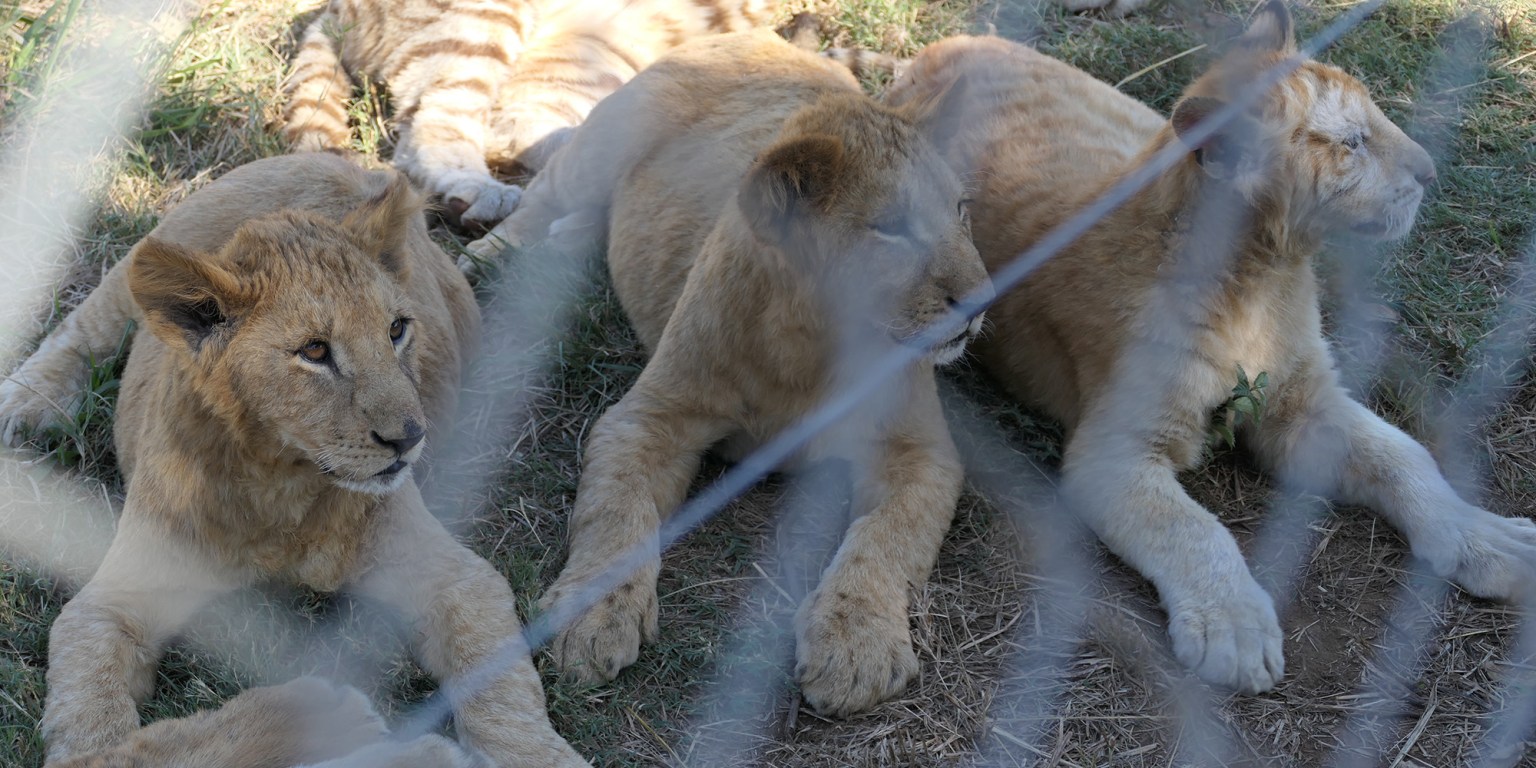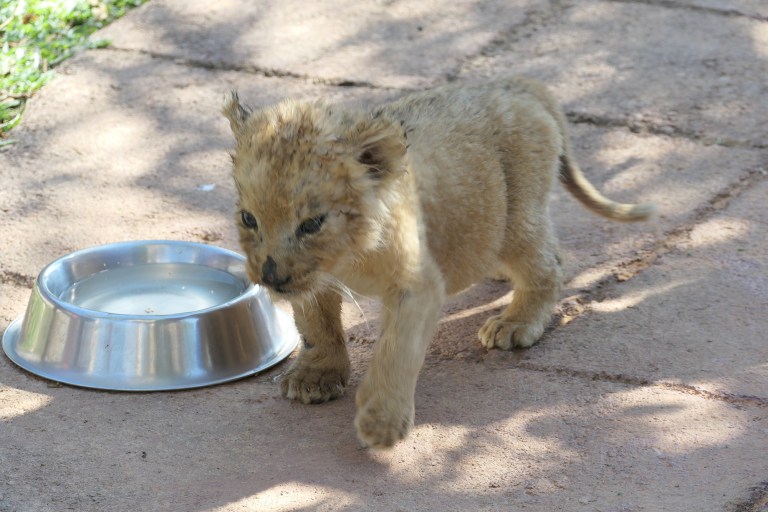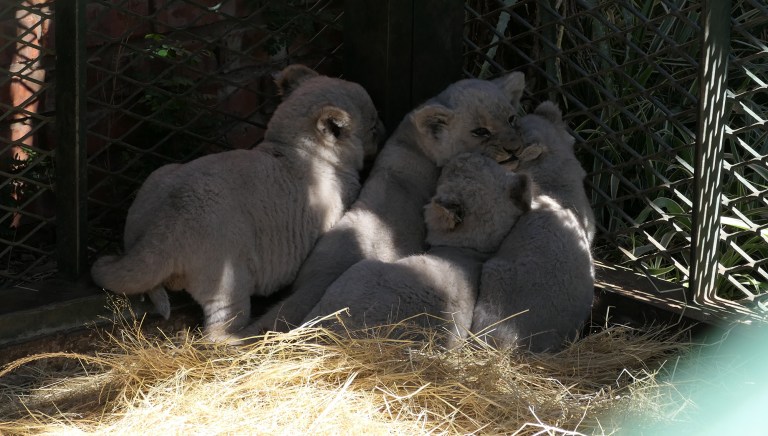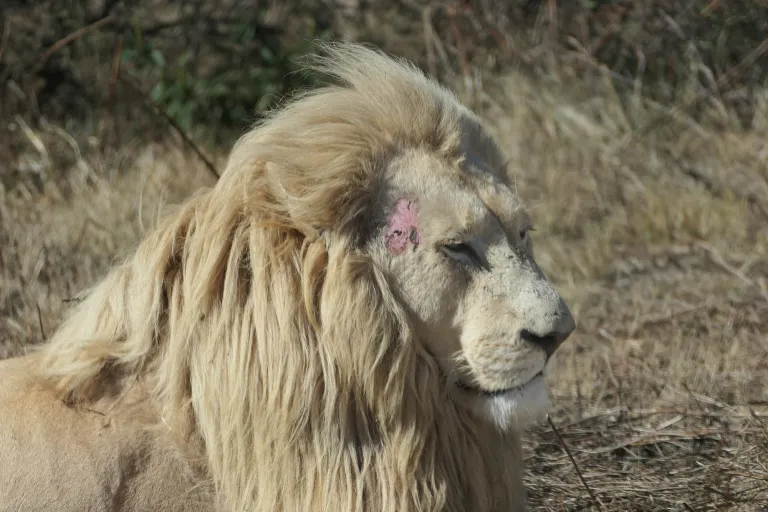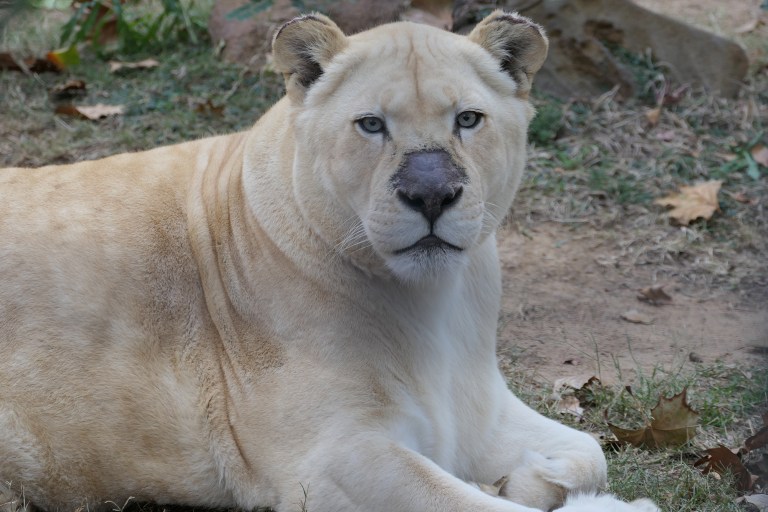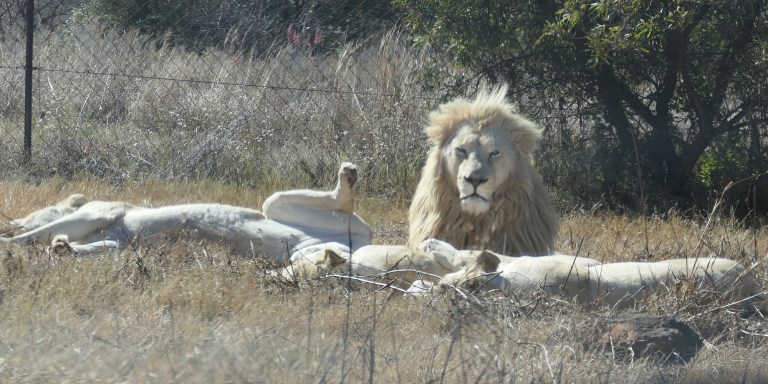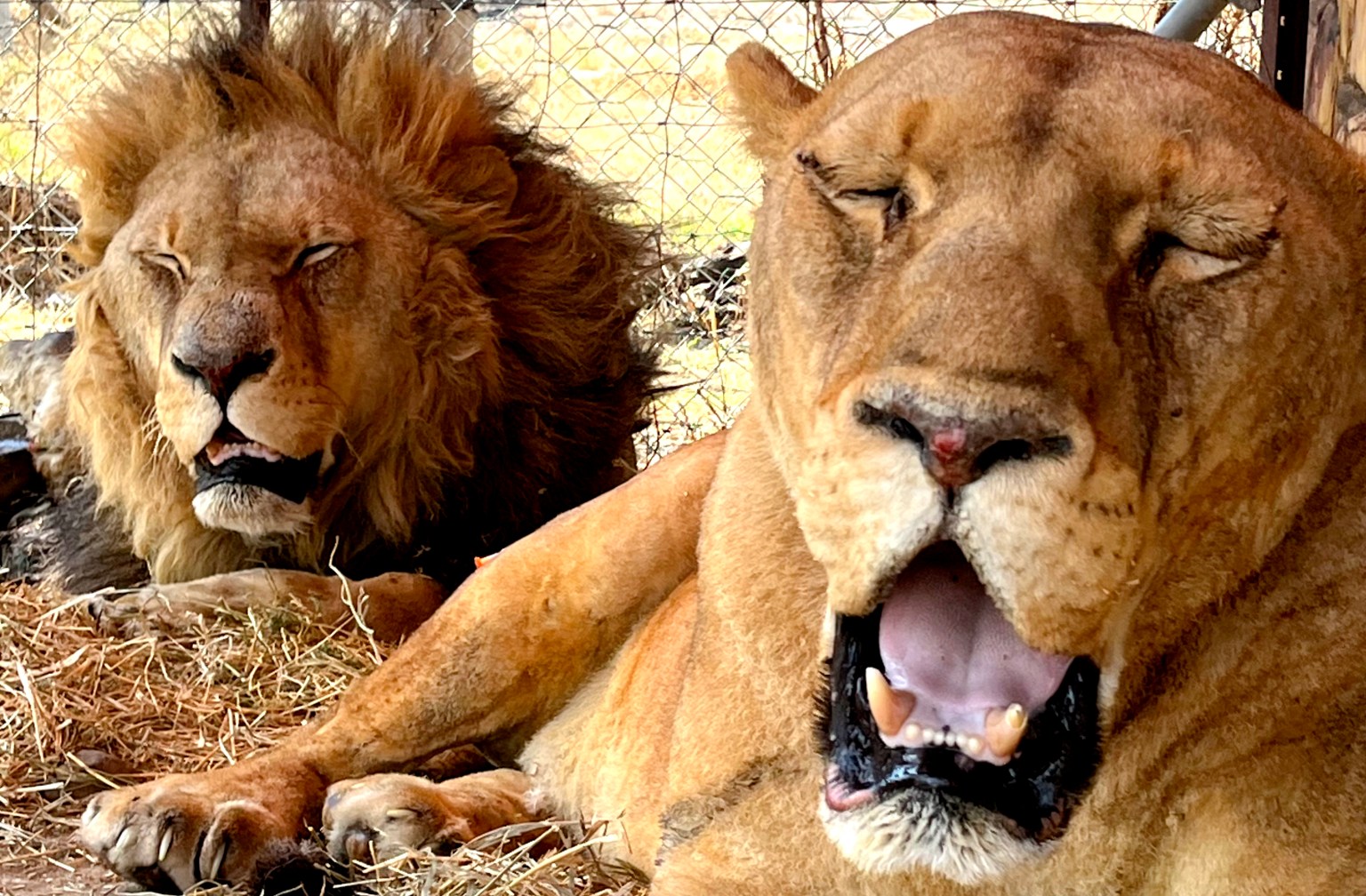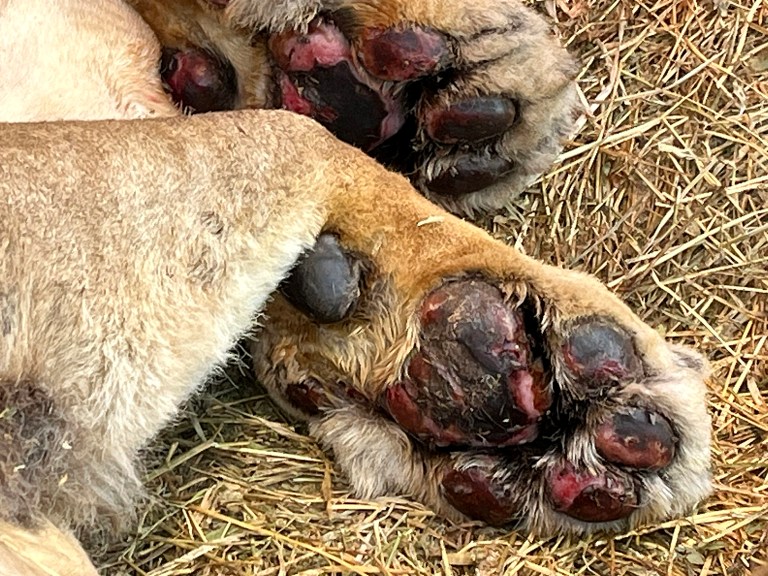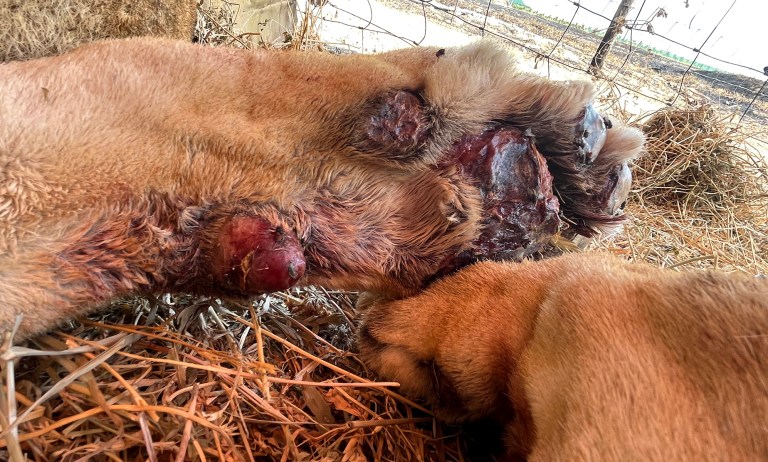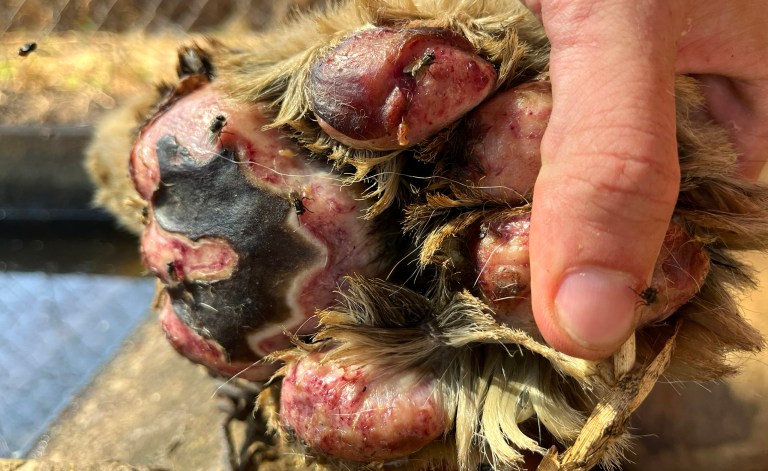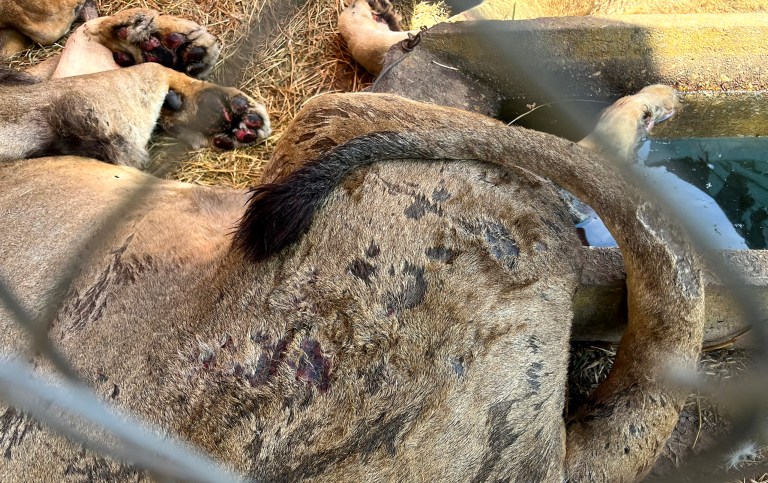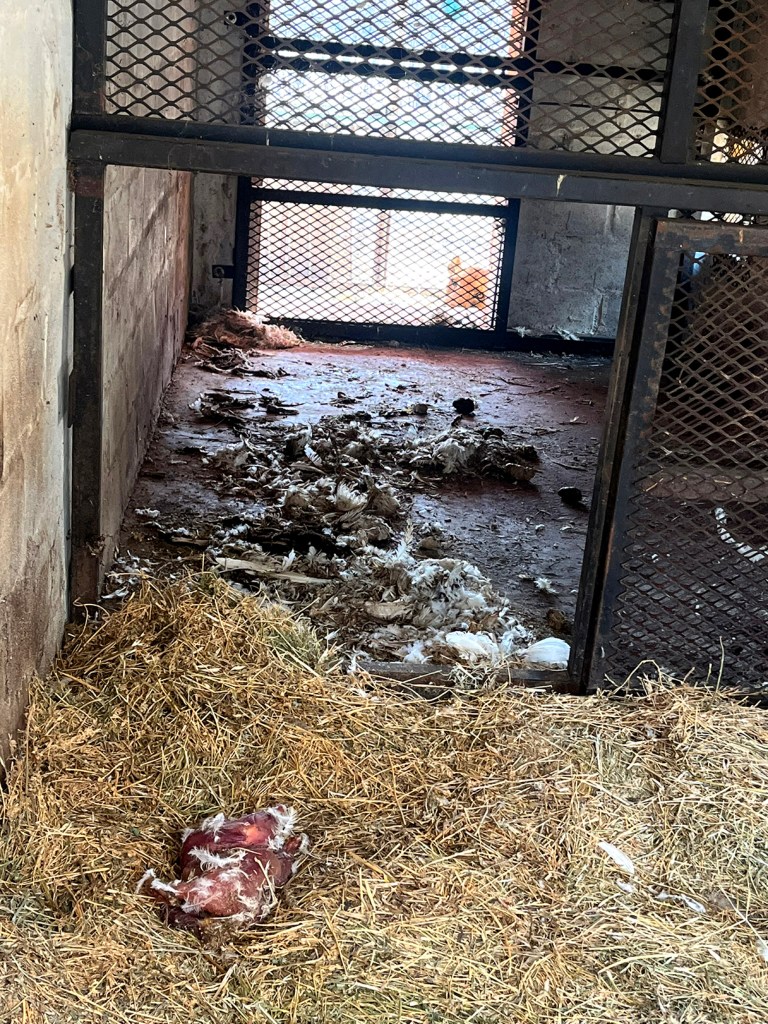‘I’m a lion farmer. No one takes my lions’: Breeders threaten court action over industry closure
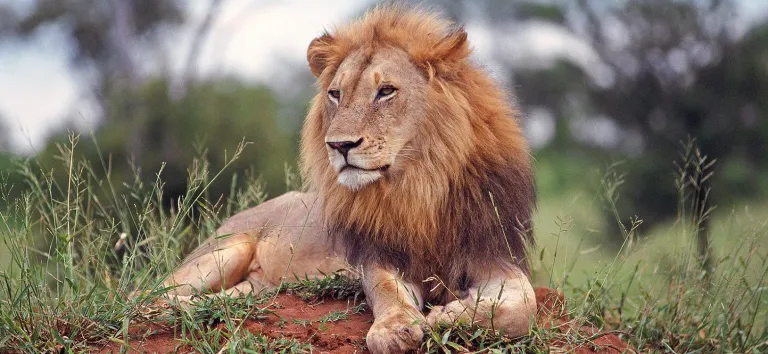 A sole male lion, gazing over his territory in the Mpumalanga area of Kruger National Park. (Photo: Gallo Images / Chris Daphne)
By Tiara Walters | 30 Jan 2024
A sole male lion, gazing over his territory in the Mpumalanga area of Kruger National Park. (Photo: Gallo Images / Chris Daphne)
By Tiara Walters | 30 Jan 2024
The South African Predator Association is gearing up for a legal showdown against government plans to close a contentious industry that farms with captive lions and their parts. Hannes Wessels, the association’s president, says it has now also placed the government’s refusal to issue a lion bone quota in its legal crosshairs.
_____________________________________________________________________________________________________________________
Reacting to Environment Minister Barbara Creecy’s contemplation of a “voluntary” exit strategy for an industry housing about 8,500 or more captive lions, lion breeder Hannes Wessels is throwing down his own gauntlet: if you take my lions, I will take you to court.
“Ek is ’n leeuboer. Niemand vat my leeus nie [I’m a lion farmer. No one takes my lions],” Wessels told Daily Maverick in his Afrikaans native tongue. “Some of my animals have names. They are not for sale, they will never be hunted. Some have died because of age … I have a special lion graveyard.”
The South African Predator Association (Sapa), a 16-year-old industry body, represents 49 lion breeders in the Free State, North West and Limpopo provinces. Wessels claims readiness to help Creecy stamp out the illegal and universally condemned practice of “canned” lion hunting — which has been flourishing since the early 1990s.
The association’s president also says he condemns luring and shooting drugged, trapped lions in cramped enclosures at close range for fun — one of multiple disturbing trade and tourism trends persisting in the South African industry. This, despite a national and global outcry where most agree: canned hunting is an unspeakably cruel, cowardly blood sport that must vanish in the rear-view mirror of the country’s shame.
Yet, there is no sound science to eliminating the whole industry of about 350 facilities Wessels says, and claims it churns out R500-million a year.
“Are we going to collaborate?” asks Wessels. “Or are we going to see each other in court?” The lion farmer also owns a Limpopo-based non-profit “predator park” which provides private viewing tours of “rescued” species that “cannot be released back into the wild”. The park says its mission is “to fight for conservation”. The animals that live here, he says, are not hunted. His adjacent wildlife estate markets its own commercial horseback safaris, game drives and hunting trips.
“Sapa will definitely not close the industry,” he vows. “As long as we know we are within our rights, we’re willing to throw money behind it.”
South African law has granted Environmental Minister Barbara Creecy powers to act against wildlife ‘well-being’ violations.
Only one facility says it will vanish in the rear-view mirror
The association’s preparedness to fight tooth and claw to protect its commercial interests follows 2021 Cabinet-approved recommendations from Creecy’s high-level panel to close down the industry.
Striving for a significant improvement of wildlife “well-being”, a term that appears 145 times in the high-level panel’s December 2020 report, the recommendations garnered support from 62.5% of the panel members. Informing the 2023 national draft policy position, the recommendations also recognise “sentience”, and note they aim to win back the hearts and minds of photo tourists who may have been repelled by canned hunting and other acts. (This policy does not affect legal hunting of wild lions as covered by the 2004 national biodiversity act.)
The minister is reportedly reviewing new recommendations handed in by the so-called lion task team at the end of December. This advice, which is not yet public, is likely to include free support for facilities willing to cease operations, possibly by relocating lions to registered sanctuaries or providing veterinary services. But the lack of direct financial compensation contributes to a less-than-rosy outlook for a voluntary phaseout, Wessels says.
Daily Maverick understands through reliable sources that only one of reportedly 350 facilities has volunteered to close its doors.
Creecy’s communications team offered a brief answer to Daily Maverick’s request for comment, which included breeder accusations about non-existent norms and standards to regulate the industry.
Spokesperson Peter Mbelengwa emphasised the government’s commitment to push ahead with the plan, citing a ministerial task team appointed in December 2022 “to identify voluntary exit options and pathways for lion breeders from the captive lion industry”. In September, the Department of Forestry, Fisheries and the Environment (DFFE) equally tabled draft regulations to block new captive facilities.
Mbelengwa also cited the high-level panel’s recommendations — “the closure of the captive breeding sector, including the keeping of lions in captivity, or the use of captive lions or their derivatives commercially”.
He did not respond to legal threats regarding industry closure.
In an industry known to shapeshift like a riddle wrapped in a mystery inside an enigma, none of several experts approached by Daily Maverick could say how many people stand to lose their jobs. Kamalasen Chetty, chair of the lion task team, declined to comment due to confidentiality obligations. Producing an audit of facilities and a humane rescue plan for vulnerable workers nevertheless featured among the team’s tasks.
Wessels says, officially, about 1,700 people are directly employed but estimates the whole value chain could be up to 100,000. He concedes there is no available data to back up that claim.
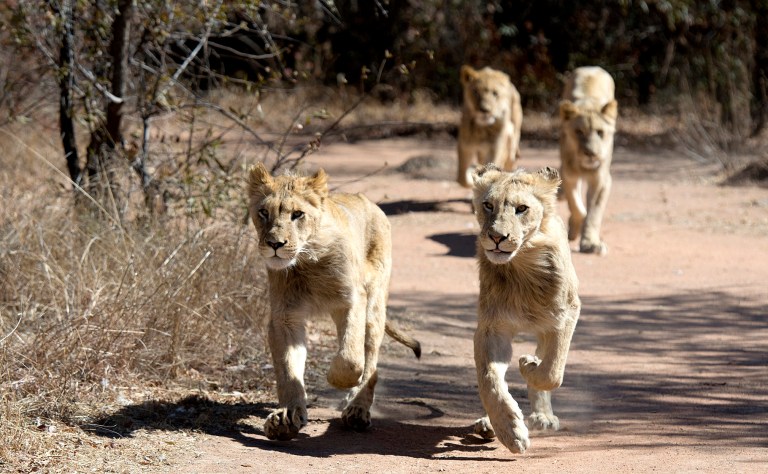 Cubs running at the farm of Willie Jacobs in Brits, North West. The farm was heavily criticised after the release of Blood Lions, a 2015 canned hunting exposé. (Photo: Gallo Images / Rapport / Herman Verwey)
‘Captive-bred hunting is definitely not canned hunting’
Cubs running at the farm of Willie Jacobs in Brits, North West. The farm was heavily criticised after the release of Blood Lions, a 2015 canned hunting exposé. (Photo: Gallo Images / Rapport / Herman Verwey)
‘Captive-bred hunting is definitely not canned hunting’
For Sapa breeders, the crux revolves around a contentious point rejected by the majority of high-level panellists: that they oversee an economically and environmentally beneficial industry that deserves to exist within a well-supported regulatory framework.
By the association’s definition, legal, ethical captive-bred hunting involves releasing registered “ranch lions” into an area of at least 1,000 hectares for a minimum of seven days. Hand-reared cubs and other “working” lions with regular exposure to humans may not be hunted, he points out.
“Captive-bred lion hunting according to the specifications of Sapa is definitely not canned hunting,” the association’s website contends. According to Wessels, the distinction explains the deep resentment members feel about being classified with canned hunters.
“You’re not allowed to hunt a lion from a vehicle or over bait,” adds Dries van Coller, CEO of the Professional Hunters’ Association of South Africa (Phasa), which works closely with the association and also bemoans a lack of government norms and standards to weed out so-called “bad apples”. “You must do it on foot, and you can’t use artificial calling. There are a whole lot of rules we put in place to ensure so-called fair chase, so that the animal can evade.”
Karen Trendler, an independent welfare specialist with veteran experience as an NSPCA national inspector and former high-level panel member, dismisses the concept of a minimum week-long release.
“There is no ways that you can honestly say that a seven-day release period rewilds that lion,” Trendler counters. “The release merely means an additional stress for the animal of going from a breeding camp to another possibly larger camp.”
WATCH | In this 60-minute webinar recording, Our Burning Planet reporter Tiara Walters speaks with Phasa CEO Dries van Coller, about captive-bred hunting and his association’s objections to the government’s conservation and sustainable use draft policy.
WATCH | In this 60-minute webinar recording, Our Burning Planet reporter Tiara Walters speaks with Phasa CEO Dries van Coller, about captive-bred hunting and his association’s objections to the government’s conservation and sustainable use draft policy.
More legal action looming — over lion bones
One might as well eat a smorgasbord of glitter to attain a sparkling personality, but lion bone remains in use in South African traditional medicines as well as in the Asian market, where they are passed off as tiger bones for “tiger wine”. Lion parts are worn as accessories.
Wessels contends that legally sport-hunted lions yield in-demand bones, claws and teeth by default, arguing that nothing goes to waste. He rejects breeding the animals solely to destroy them for their bones — a practice that, legally at least, ground to a halt after the high court in 2019 declared export quotas as unconstitutional for failing to consider lion welfare.
“Obviously, there might be cowboys breeding only for the bone trade, they need to get out of the industry,” he says, but maintains a familiar argument used by breeders: restrictions on lion parts or industry shutdown could pile poaching pressure on wild lion populations.
According to a letter sent to Creecy on 10 January, and seen by Daily Maverick, Sapa’s legal team gave her department 15 days to issue a 2024 quota for lion bones and derivatives.
Creecy’s communications team confirmed that the minister had received the letter.
“Internal consultation is underway,” they said, “whereafter DFFE will respond to Sapa.”
The letter also demands a 2019 to 2023 quota for bones and parts from a “lawful” stockpile “not covered by the 2024 quotas”. This stockpile’s value, the letter notes, “runs into millions of rands”. It argues that welfare is not a material consideration because bones would be sourced from the stockpile and sport-hunted animals.
However, welfare NGO World Animal Protection told Daily Maverick that, if there are “cowboys” in the bone trade, there must be an awful lot of them.
“A large number of commercial captive facilities breed and keep lions purely for the trade in bones and derivatives,” says Dr Neil D’Cruze, the NGO’s head of wildlife research. As such, he says “substantial numbers of lion bones, claws and teeth should not be dismissed as parts from legally sport-hunted lions that would otherwise go to waste”.
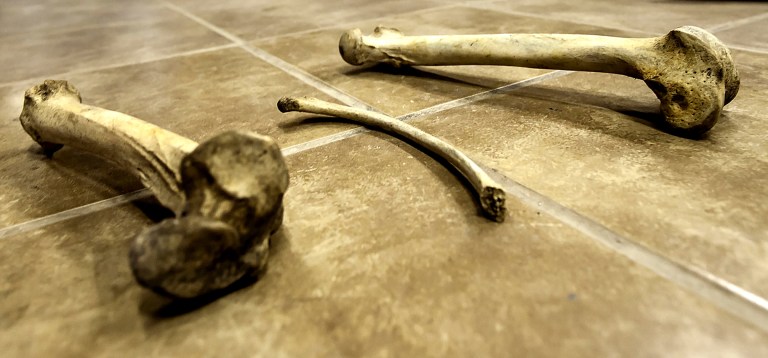 A man displays lion bones at Big Buck Taxidermy on 22 May 2013 in Pretoria, South Africa. (Photo: Gallo Images / The Times / Daniel Born)
A man displays lion bones at Big Buck Taxidermy on 22 May 2013 in Pretoria, South Africa. (Photo: Gallo Images / The Times / Daniel Born)
‘I know they did it. I know their names’
The association, Wessels says, is at least as eager as welfare campaigners to snuff out industry rot such as poor worker conditions and canned hunting, arguing it is willing and able to help an under-resourced government with the tough task of weeding out “rogue” operators.
In November, they sent a letter to the lion task team, proposing three phases to “clean up” the industry through a governance regime based on self-regulation and an independent inspectorate. The tiered overhaul includes hunts of so-called “wild” lions in larger enclosures not imprinted on humans, and purportedly requiring no release period, as well as “essential” empowerment of workers.
This scenario is outlined in the high-level panel report. It was struck down by an expert majority.
In the absence of minimum government norms and standards to regulate lion welfare, breeding and keeping, the association developed a 46-page “manual” of its own.
“We’ve got people who invested their own livelihood into these lions. So they will try to do everything according to the Sapa manual,” Wessels says, yet the standards were not legally enforceable making compliance a challenge. The association’s efforts to simplify husbandry legislation fragmented across nine provinces, and persuade the government to adopt their manual, have also failed, he adds.
“But then we’ve got teeth, we can bite,” he pleads. “At this stage, we’ve got nothing. We can warn, we can phone, we can ask … because that [rogue] farmer can just tell you, ‘Hey, you know what, I’ve got four trees. I think it’s enough shade. The size of the enclosure is big enough, according to me. Have you got proof it’s not?’”
Referring to transgressors, Wessels insists: “I know they did it. I know their names.”
He also observes: “We’ve got this fancy online system at the moment from government. Unfortunately, their offices haven’t got data. How can you apply online [for a permit] if they can’t read your emails?”
A leaner permit system and a single set of industry rules across South Africa, he claims, would enable Sapa to address systemic transgressions within 2.5 years.
‘I can give you free lions you can load this afternoon’
If all Africa’s remaining 23,000 or so wild lions were corralled into Cape Town’s DHL stadium, which holds 55,000 seats, they would barely fill it by half. The African lion is listed as vulnerable on the IUCN Red Species List. Illegal trafficking for body parts, conflict with humans and other factors have wiped the species from more than 90% of its range. South Africa’s 3,000 or so wild lions, however, buck continental trends by being stable, if not increasing.
To contend that Sapa’s big cats are valuable to wild spaces, Wessels cites the association’s “cradle to grave” genetics traceability programme. He also quotes a 2021 University of the Free State study which tracked the release of five lions in a Limpopo reserve. The lions, according to the results, were self-sustaining, cub survival was high and the population grew. Young lions dispersed and cubs had their own litters.
“I can tell you from my facility, where I’m sitting, I can give you free lions that you can load this afternoon if you want them, as long as they are used in a rewilding programme,” he says, pointing out that “every Sapa breeder” will match his mahala offer.
A 2023 Nature-published study led by the University of Cape Town underscores possible limitations within the captive gene pool and flags signs of genetic drift. Written in response to the high-level panel’s request for genetic analysis of South Africa’s captive lions, it tested animals in 31 facilities.
Captive lions “were not more inbred than those in managed wild or wild populations”, lead author Dr Susan Miller told us, although “there are genetic differences between lions across the continent that should be considered” before possible rewilding.
The paper does not advocate rewilding captive lions, but “from a genetic point of view, they can be used if they are tested to determine their genetic origin”, Miller told Daily Maverick.
“The question is not whether captive lion can be released, but should they be released?” asks Trendler, the independent welfare specialist. “Lions that have been exposed to humans and captive husbandry are a greater risk for attacks and predation of livestock than wild lions. Relocated wild lions with a good prey base would quickly breed up.”
Trendler, a prominent welfare conservationist in South African wildlife circles for more than 30 years, says there is “no need” for a captive population of thousands. Cradle-to-grave traceability “may be possible on some facilities but certainly not all”.
What to do with 8,500 or more captive lions?
The high-level panel envisions a South African wildlife sector supported by “secured, restored and rewilded natural landscapes with thriving populations of elephant, lion, rhino and leopard, as indicators for a vibrant, responsible, inclusive, transformed and sustainable wildlife sector”.
But the panel holds the view that captive lion breeding for local conservation is presently unnecessary, and that rewilding farmed big cats is unfeasible. This creates a likely hard problem for the 8,500-plus animals cited in the panel report — that is, nearly equal to half of all wild lions — living in enclosures.
“Unfortunately, euthanasia will likely need to be considered for some of the lions enduring a life of suffering on lion farms in South Africa,” warns World Animal Protection’s D’Cruze. “Any decision-making in this regard should be carefully considered for any animal on an individual, case-by-case basis.”
“These animals are bred to be killed,” Trendler adds. “Which is worse — euthanasia or hunting?”
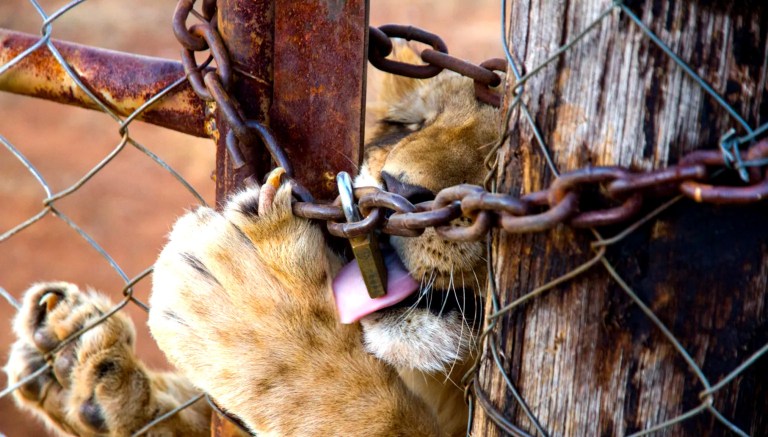 A cub on a lion breeding farm licks a lock on its cage. (Photo: Pippa Hankinson / Blood Lions)
A cub on a lion breeding farm licks a lock on its cage. (Photo: Pippa Hankinson / Blood Lions)
“Tweaking the status quo is not enough,” D’Cruze stresses, advocating an “immediate prohibition on breeding new cubs” to halt a metastasising catastrophe.
Apart from canned hunting, he says that well-documented welfare contraventions such as bone-slaughter dens and commercial cub petting are also widely associated with lion husbandry.
NSPCA facility inspections have revealed “inadequate hygiene, insufficient diet and a lack of necessary provisions at nearly half of the 95 lion farms inspected”. He also cites cross-breeding with other big cats and ‘speed-breeding’. The latter involves separating unweaned cubs from their mother to bring the female into early oestrus — a practice that Wessels says he opposes.
The real tragedy, D’Cruze underscores, is the profit-driven industry causing daily suffering for life-long captive lions.
‘No definitive scientific evidence’ of conservation value
Concerns extend to a range of different activities, D’Cruze says, including a “lack of transparency”, and “repeatedly raised concerns about the exploitation of employees”. Reports suggest underpayment, lack of rights and safety risks, especially for labourers in closed-access lion farms linked to criminal networks.
Citing the panel’s findings, he stresses that the industry poses risks to public health through potential disease transmission and lion attacks. It does “not contribute meaningfully to the conservation of wild lions”, damaging brand South Africa with “political and economic risks”.
On the conservation value of captive lion breeding, he challenges the industry’s claims.
“There is no definitive scientific evidence that the commercial captive breeding of lions is having any substantial direct positive benefit on the conservation of wild lion,” says D’Cruze, who co-authored a 2023 study calling for a “lion protection fee” as a tourist levy. “We should be wary of viewing them as Noah’s Ark … there are severe concerns related to the release of these captive-bred populations in terms of their survivability.”
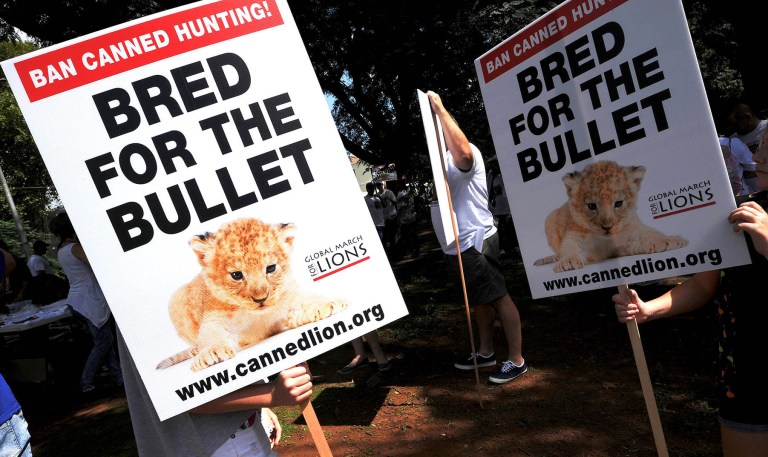 Johannesburg protesters during a national march against canned hunting in 2014. (Photo: Gallo Images / Foto24 / Mary-ann Palmer)
Johannesburg protesters during a national march against canned hunting in 2014. (Photo: Gallo Images / Foto24 / Mary-ann Palmer)
Turning to the issue of illegal trade, the campaigner remarks: “Investigative research has repeatedly shown that the legal commercial captive breeding industry can act as a cover for illegal wildlife trade … the industry has had 30 years to address these issues and has not yet been able to successfully act on any of the rogue elements. A different approach is required.”
Bad fruit in the orchard of stink?
While the industry may claim that its “poor reputation” is due to a few bad apples, those bad apples, notes Trendler, “have caused enough stink to warrant a 2018 parliamentary colloquium, a Cabinet decision to close it down, a judgement against the lion bone quota and ministerial high-level panel that came to the same conclusion”.
Trendler observes that a “problematic” legislative and regulatory framework and the national environment department must also shoulder blame “for allowing this industry to grow in spite of opposition”.
“Welfare inspections,” she laments, “continue to produce unacceptable standards of care.”
While “drugging and luring may be opposed by the lion breeders, the current hunting of captive-bred lion remains ‘put and take’”. The net result is a “guaranteed hunt”.
Humane euthanasia is hard to consider, Trendler concedes. “But given that these lion are bred to be hunted, and that the captive population is not stable but dynamic, with ongoing hunts and breeding, we are left between a rock and a hard place.” DM
